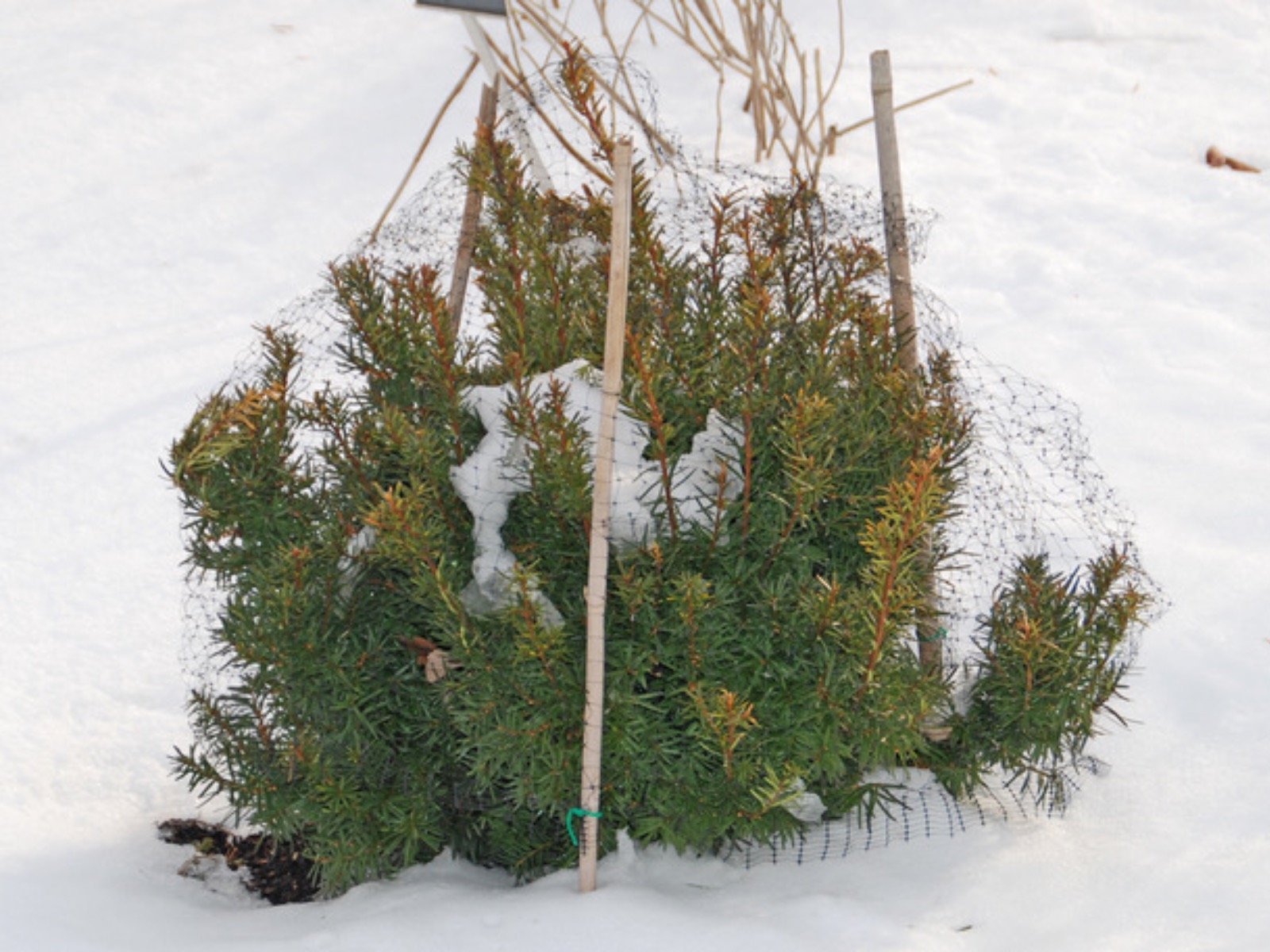Prepare your evergreens now before winter weather takes its toll on your boxwood, arborvitae and rhododendrons. Winter wind, sun, frozen soil, snow and ice can wreak havoc on our plants, especially evergreens.
Water plants, especially evergreens and new plantings, thoroughly before the ground freezes. Evergreens continue to lose moisture throughout the winter even when the soil is frozen or dry.
Apply a layer of mulch to the soil under and around trees and shrubs or freshen existing mulch. A two- to three-inch layer of woodchips or shredded bark insulates roots from temperature extremes, conserves moisture, suppresses weeds during the growing season and improves the soil as it breaks down in the future. Keep mulch several inches away from the trunk of trees and stems of shrubs.
Shelter evergreens from winter winds and sun that increase moisture lost through evergreen needles and leaves. Broadleaf evergreens like rhododendrons and boxwoods are most susceptible and benefit from shelter when planted in exposed locations.
Create an attractive winter shelter with one of the commercially available winterizing products or build your own. Use a bit of decorative fencing or recycle a locally grown Christmas tree to cast a bit of shade and block the wind. Christmas tree windbreaks also add greenery to the winter landscape and shelter for visiting birds.
Loosely tie together stems of upright arborvitae, junipers and yew hedges subject to heavy snow and ice loads. As the snow and ice pile on, it can cause these plants to split. The shrubs often recover in spring, but years of repeated damage can eventually disfigure these plants.
Use strips of cotton to loosely tie the multiple stems together so the snow rolls off the plant. Or wrap the whole shrub or hedge in bird netting. The netting blends in with the foliage so the plants are secure and still add beauty to the winter landscape. The netting also helps discourage hungry wildlife.
Install fencing, apply repellents or enlist scare tactics to reduce the risk of damage from hungry animals. Applying wildlife protection before critters start feeding increases your chance of success. Monitor plantings for damage, adjust as needed and consider using a combination of animal protections.
Delay major pruning until the worst of winter weather has passed. The inner needles and leaves of evergreens have been sheltered by the outer layer of growth. Removing the outermost growth in fall exposes the tender inner growth to the harsh weather, increasing the risk of winter damage. It’s better to wait until early spring to shape, if needed, while correcting any winter damage.
A few hours spent preparing evergreens for winter now can save you hours repairing damage next spring and money spent on replacement plants.
Melinda Myers has written more than 20 gardening books, including "Small Space Gardening." She hosts The Great Courses "How to Grow Anything" DVD series and the nationally syndicated Melinda’s Garden Moment TV and radio segments. Myers’ website, MelindaMyers.com, features gardening videos, podcasts, audio tips and monthly gardening checklists.







